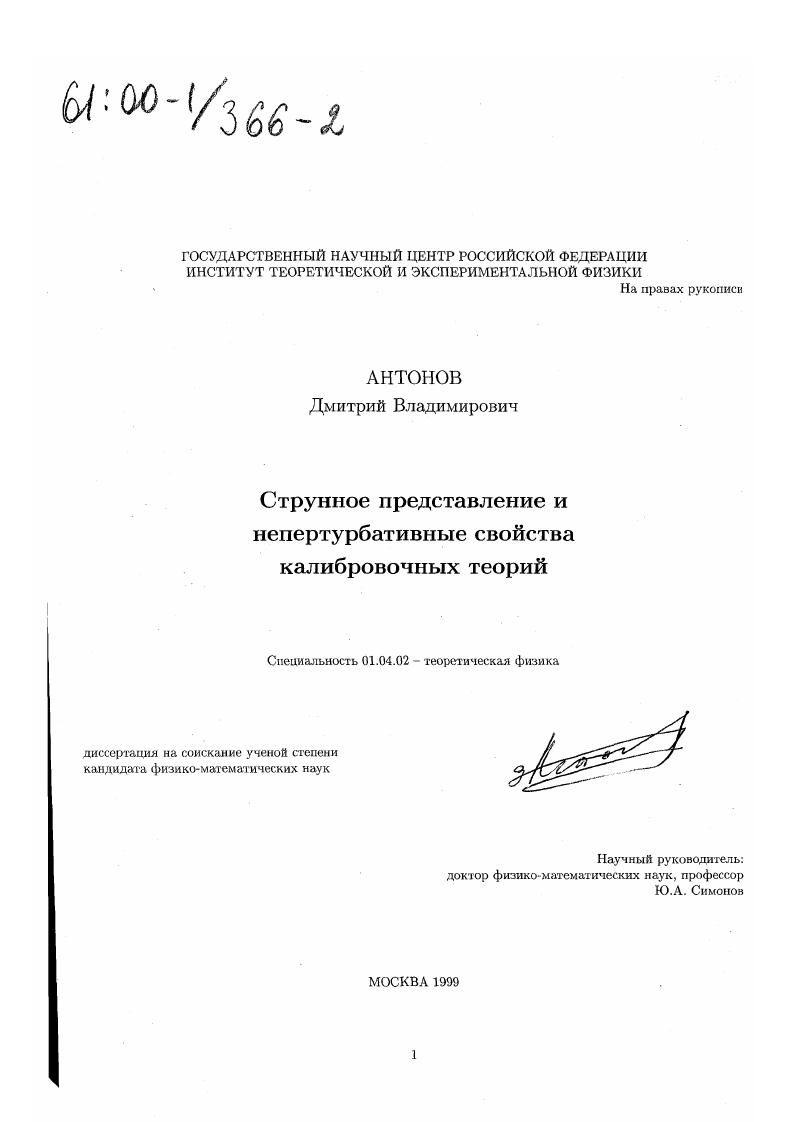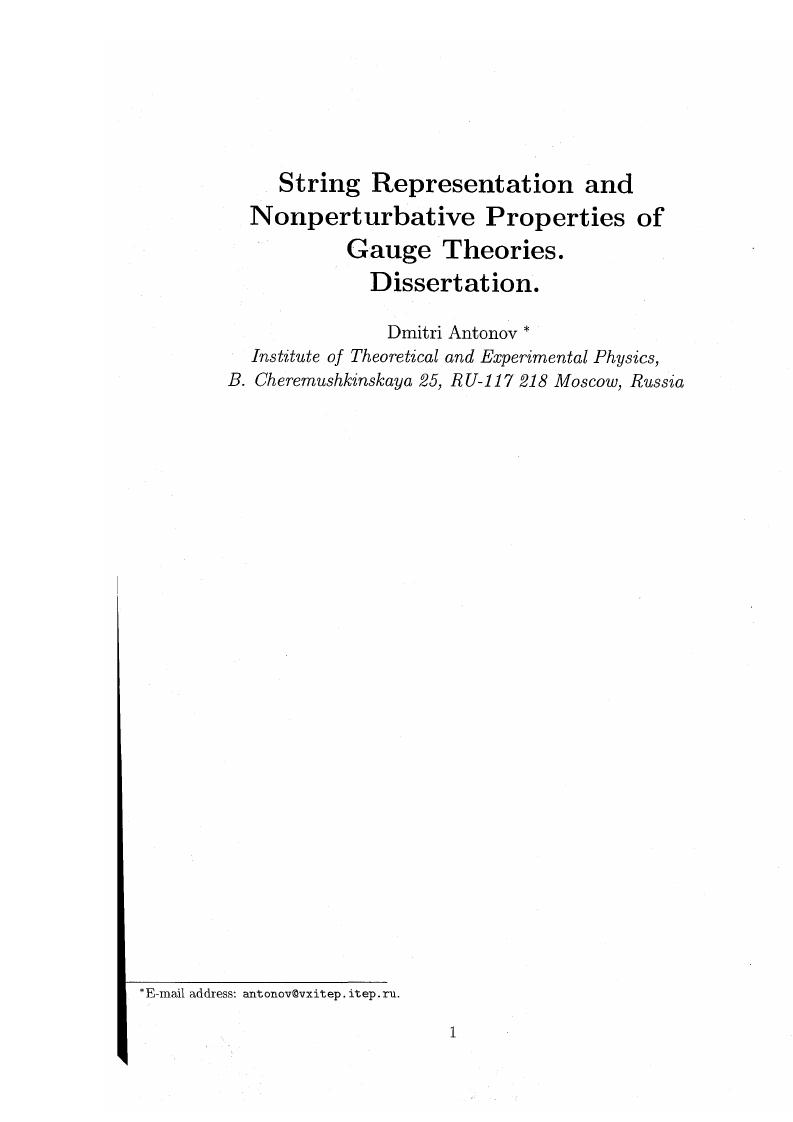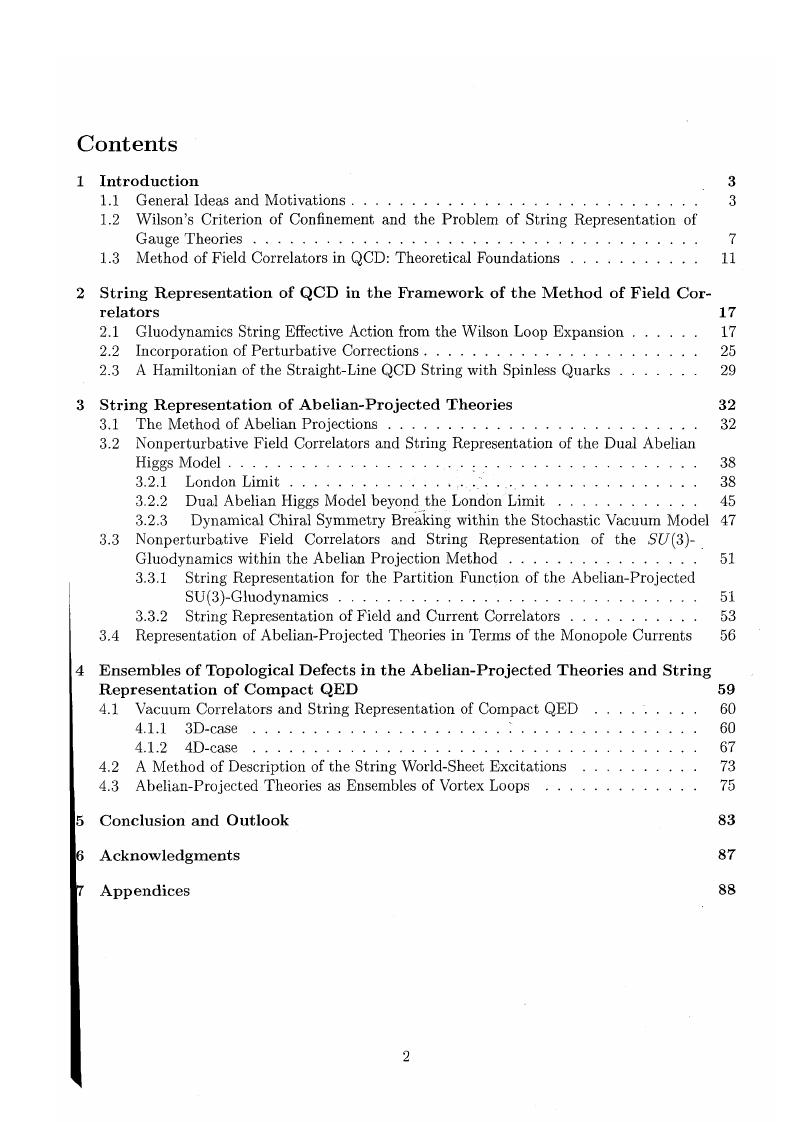Струнное представление и непертурбативные свойства калибровочных теорий

- Автор:
Антонов, Дмитрий Владимирович
- Шифр специальности:
01.04.02
- Научная степень:
Кандидатская
- Год защиты:
1999
- Место защиты:
Москва
- Количество страниц:
100 с.
Стоимость:
700 р.250 руб.
до окончания действия скидки
00
00
00
00
+
Наш сайт выгодно отличается тем что при покупке, кроме PDF версии Вы в подарок получаете работу преобразованную в WORD - документ и это предоставляет качественно другие возможности при работе с документом
Страницы оглавления работы


Рекомендуемые диссертации данного раздела
| Название работы | Автор | Дата защиты |
|---|---|---|
| Решение уравнений движения полевой теории фермионной струны | Горбачев, Роман Викторович | 2009 |
| Барионы в непертурбативной КХД | Трусов, Михаил Александрович | 2006 |
| Коллективные и релятивистские эффекты нелинейной динамики заряженных частиц в неравновесной плазме | Габышев Дмитрий Николаевич | 2017 |